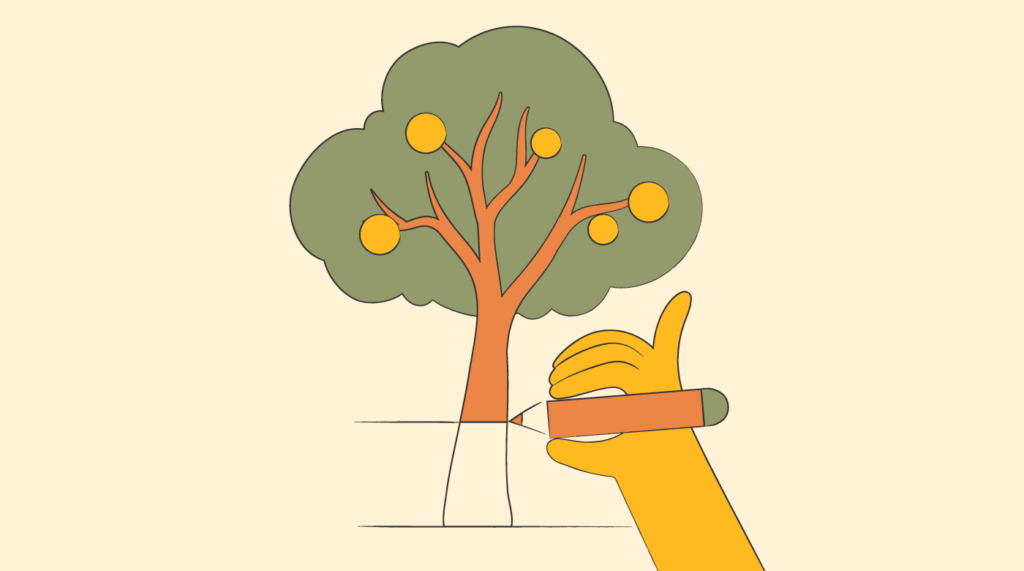As a product manager, prioritization is one of your biggest tasks. The product tree framework is a visual tool that gamifies decision-making for collaborative and effective product management.
What is the Product Tree Prioritization Framework?
There are many prioritization frameworks you can use in product management, so what makes this one different?
The product tree framework is a visual tool used by product teams to determine which product feature should take precedence in mapping development. Here's a breakdown:
- Trunk: This signifies the primary product and its core features. These functionalities are pivotal to the very essence of the product.
- Branches: These feature branches stretch out from the trunk and indicate main feature categories. They represent parts of the tree holding potential new features or major initiatives.
- Leaves: Attached to the branches, leaves symbolize individual feature requests. The number of leaves can be overwhelming, so prioritization crucial.
- Fruits (or seed baskets): These beauties exemplify the extra perks or potential new product ideas that could bring long-term growth and a competitive edge.
This framework isn’t just a product tree template on a whiteboard; it's a living representation of your product roadmap and strategy. Coupled with the right product management software, this prioritization method makes the most important product features clear and logical for everyone on the team.

How Do You Play 'Prune The Product Tree'?
In product management, “Prune the Product Tree” is a dynamic exercise you can do with your team. Follow these steps:
- Draw Your Tree: Take out your Sharpies. On a large poster or whiteboard, sketch a basic tree with a trunk and some branches. Leave space to accommodate future additions.
- Assemble Your Team: Rally team members, including internal stakeholders like developers and external stakeholders like select users.
- Distribute Leaves and Fruits: Hand out sticky notes and post-it notes representing potential new features and features.
- Place Features: Let participants place their feature requests on the tree where they see fit. Features closer to the trunk represent near-term goals, while those on the outer branches hint at the long-term future.
- Discuss and Debate: Your team will inevitably have different views on what should be prioritized, but this is where the magic happens. These discussions offer valuable insights and often reveal technical requirements.
- Prune Away: Once you’ve thoroughly discussed, start trimming. Remove features not aligned with the existing product or the long-term vision.
The "product tree game” approach gamifies the often tedious process of feature prioritization, making it interactive and insightful.
How Do Innovation Games Benefit Product Teams?
Luke Hohmann introduced the concept of innovation games in his book Innovation Games: Creating Breakthrough Products through Collaborative Play, and they’ve since become a cornerstone for many product teams. But what's the buzz about?
- Collaborative Wisdom: Innovation games, like "Prune the Product Tree," facilitate democratic decision-making. From junior designers to senior developers, everyone gets a say.
- Clear Visual Representation: A tangible product roadmap, dotted with sticky notes, speaks louder than long meetings.
- Boosted Engagement: Gamification in product strategy actively engages team members and encourages creativity.
- Customer Insights: When you involve users in these sessions, you get firsthand feedback, leading to a better product tailored to real-world needs.
- Synergy and Strategy: These games break departmental silos and lead to a cohesive product strategy.
Using the product tree framework in product management ensures that new features align with core initiatives and can improve an existing product through collaboration and strategic vision.
For more product management tips and tools, subscribe to The Product Manager newsletter.

